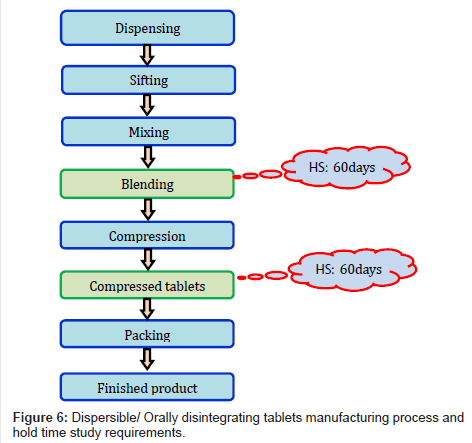 The Journal of Data Expertise and Laptop Science (JITeCS) is a peer-reviewed open entry journal printed by College of Laptop computer Science, Universitas Brawijaya (UB), Indonesia. Keep away from manufacturing the product if clients aren’t prepared to buy it. Take a look at opponents within the business and understand how your product offers further worth to your prospects. Manufacturing is at all times going to be a continuous process and when business in China relies heavily on relationships, sustaining the connection to your producer can be crucial over time.
The Journal of Data Expertise and Laptop Science (JITeCS) is a peer-reviewed open entry journal printed by College of Laptop computer Science, Universitas Brawijaya (UB), Indonesia. Keep away from manufacturing the product if clients aren’t prepared to buy it. Take a look at opponents within the business and understand how your product offers further worth to your prospects. Manufacturing is at all times going to be a continuous process and when business in China relies heavily on relationships, sustaining the connection to your producer can be crucial over time.
We have helped pharmaceutical and biotechnology firms deliver to market a range of drug products in complex oral dosage kinds including small molecules, peptides, enzymes, nucleic acids and those with high potency APIs and managed substances.
Nonetheless, if the overage is required to make up for a validated loss during the manufacturing course of (e.g. loss throughout vacuum transfer) or to fill void area (e.g. extra coating solution to fill the tubing) it needs to be introduced along with justification and supporting information for the need and quantity of the overage.
Marco Perry, founder of technique, design and engineering agency Pensa , suggested looking for a factory that not solely has the tools you want, but also operates as a associate that will help you make a fantastic product. Account focus is not new – but the capability to do that at scale is. Information and marketing technology is required.
The flexibility of the related substances analytical methodology(s) used to detect and management potential impurities (e.g. intermediates) should be mentioned (e.g. together with potential impurities that may be controlled as unspecified impurities in the remaining drug substance specifications).…
 HEALTHFUL PETS DISCLAIMER: This data is for tutorial functions solely and isn’t meant to interchange the recommendation of your personal veterinarian or doctor. Now is the time to tighten your belt and function your manufacturing enterprise as lean and value-efficiently as possible. Growing numbers of solopreneur manufacturing firms is part of the broader development towards more solopreneur companies normally.
HEALTHFUL PETS DISCLAIMER: This data is for tutorial functions solely and isn’t meant to interchange the recommendation of your personal veterinarian or doctor. Now is the time to tighten your belt and function your manufacturing enterprise as lean and value-efficiently as possible. Growing numbers of solopreneur manufacturing firms is part of the broader development towards more solopreneur companies normally. Industrial engineering is a mix of engineering science, social and administration. The third and fourth semesters might cowl subjects like thermal engineering, principles of management and managerial economics, information construction and file dealing with using C, machine drawing and pc-aided drafting, idea of machines, environmental studies, instrumentation and metrology, amenities planning and industrial planning.
Industrial engineering is a mix of engineering science, social and administration. The third and fourth semesters might cowl subjects like thermal engineering, principles of management and managerial economics, information construction and file dealing with using C, machine drawing and pc-aided drafting, idea of machines, environmental studies, instrumentation and metrology, amenities planning and industrial planning. We are at present experiencing widespread outages and loads of suppliers aren’t functioning on Please contact us once you need fast help. As a family owned and operated company since 1976, Penta Manufacturing continues to create strategic partnerships throughout the chemical community which might be important in serving to our prospects achieve their goals in right now’s ever altering business setting.
We are at present experiencing widespread outages and loads of suppliers aren’t functioning on Please contact us once you need fast help. As a family owned and operated company since 1976, Penta Manufacturing continues to create strategic partnerships throughout the chemical community which might be important in serving to our prospects achieve their goals in right now’s ever altering business setting. Thinking of a career in industrial engineering? Industrial and methods engineering’s (ISE) method is the other; anybody half cannot be understood with out the context of the whole. The combination of analytical and numerical expertise and information of enterprise administration is crucial for a good advisor in my view.
Thinking of a career in industrial engineering? Industrial and methods engineering’s (ISE) method is the other; anybody half cannot be understood with out the context of the whole. The combination of analytical and numerical expertise and information of enterprise administration is crucial for a good advisor in my view. The California Different Power and Advanced Transportation Financing Authority (CAEATFA) works collaboratively with private and non-private partners to offer revolutionary and efficient financing options for California’s industries, helping in lowering the state’s greenhouse fuel emissions by rising the event and deployment of renewable energy sources, vitality efficiency, and advanced transportation and manufacturing technologies to scale back air pollution, preserve power, and promote financial improvement and jobs. This closed carbon cycle, nevertheless, does not essentially embody any energy wanted to cultivate, harvest, and process the biomass. Most experts agree that biodiesel manufacture is way much less vitality-intensive than conventional ethanol manufacturing—i.e. a lot less energy is used to create the gas than is contained in the last fuel product.
The California Different Power and Advanced Transportation Financing Authority (CAEATFA) works collaboratively with private and non-private partners to offer revolutionary and efficient financing options for California’s industries, helping in lowering the state’s greenhouse fuel emissions by rising the event and deployment of renewable energy sources, vitality efficiency, and advanced transportation and manufacturing technologies to scale back air pollution, preserve power, and promote financial improvement and jobs. This closed carbon cycle, nevertheless, does not essentially embody any energy wanted to cultivate, harvest, and process the biomass. Most experts agree that biodiesel manufacture is way much less vitality-intensive than conventional ethanol manufacturing—i.e. a lot less energy is used to create the gas than is contained in the last fuel product. The Journal of Data Know-how and Laptop Science (JITeCS) is a peer-reviewed open entry journal printed by School of Laptop Science, Universitas Brawijaya (UB), Indonesia. The abstract presented in the QOS should include data introduced in a method that it illustrates the soundness conclusions (e.g. solely highest and lowest values recorded in summary, or values that finest represent the info and trends, highest ranges of impurity recorded for all batches at the newest timepoint) and dialogue on the steadiness trends.
The Journal of Data Know-how and Laptop Science (JITeCS) is a peer-reviewed open entry journal printed by School of Laptop Science, Universitas Brawijaya (UB), Indonesia. The abstract presented in the QOS should include data introduced in a method that it illustrates the soundness conclusions (e.g. solely highest and lowest values recorded in summary, or values that finest represent the info and trends, highest ranges of impurity recorded for all batches at the newest timepoint) and dialogue on the steadiness trends. America, and really the whole world as a whole, runs on fossil fuels like gasoline and coal. It’s widely accepted that we need to make a change to cleaner and renewable power sources if we would like our planet to outlive for so long as attainable. Contains a chapter of statistical tables concerning manufacturing and consumption of these power sources.
America, and really the whole world as a whole, runs on fossil fuels like gasoline and coal. It’s widely accepted that we need to make a change to cleaner and renewable power sources if we would like our planet to outlive for so long as attainable. Contains a chapter of statistical tables concerning manufacturing and consumption of these power sources. WHOLESOME PETS DISCLAIMER: This info is for tutorial functions solely and is not meant to interchange the recommendation of your individual veterinarian or physician. Actors and crew are hand picked by the producer, director, and casting director, who typically use collaborators or referenced personnel to prevent untrusted or unwelcomed people from getting access to a specific manufacturing and compromising the whole production by means of leaks.
WHOLESOME PETS DISCLAIMER: This info is for tutorial functions solely and is not meant to interchange the recommendation of your individual veterinarian or physician. Actors and crew are hand picked by the producer, director, and casting director, who typically use collaborators or referenced personnel to prevent untrusted or unwelcomed people from getting access to a specific manufacturing and compromising the whole production by means of leaks. De Anza’s Auto Tech Division offers daytime and night purposes to help you meet your targets. A person filming a concert, or their child’s band recital with a smartphone or video digicam for the only function of capturing the memory would fall below the category of “dwelling video” not video manufacturing. Bent Manufacturing Firm takes pride in being a number one provider for distributors catering to contractors, municipalities and utility companies worldwide.
De Anza’s Auto Tech Division offers daytime and night purposes to help you meet your targets. A person filming a concert, or their child’s band recital with a smartphone or video digicam for the only function of capturing the memory would fall below the category of “dwelling video” not video manufacturing. Bent Manufacturing Firm takes pride in being a number one provider for distributors catering to contractors, municipalities and utility companies worldwide.